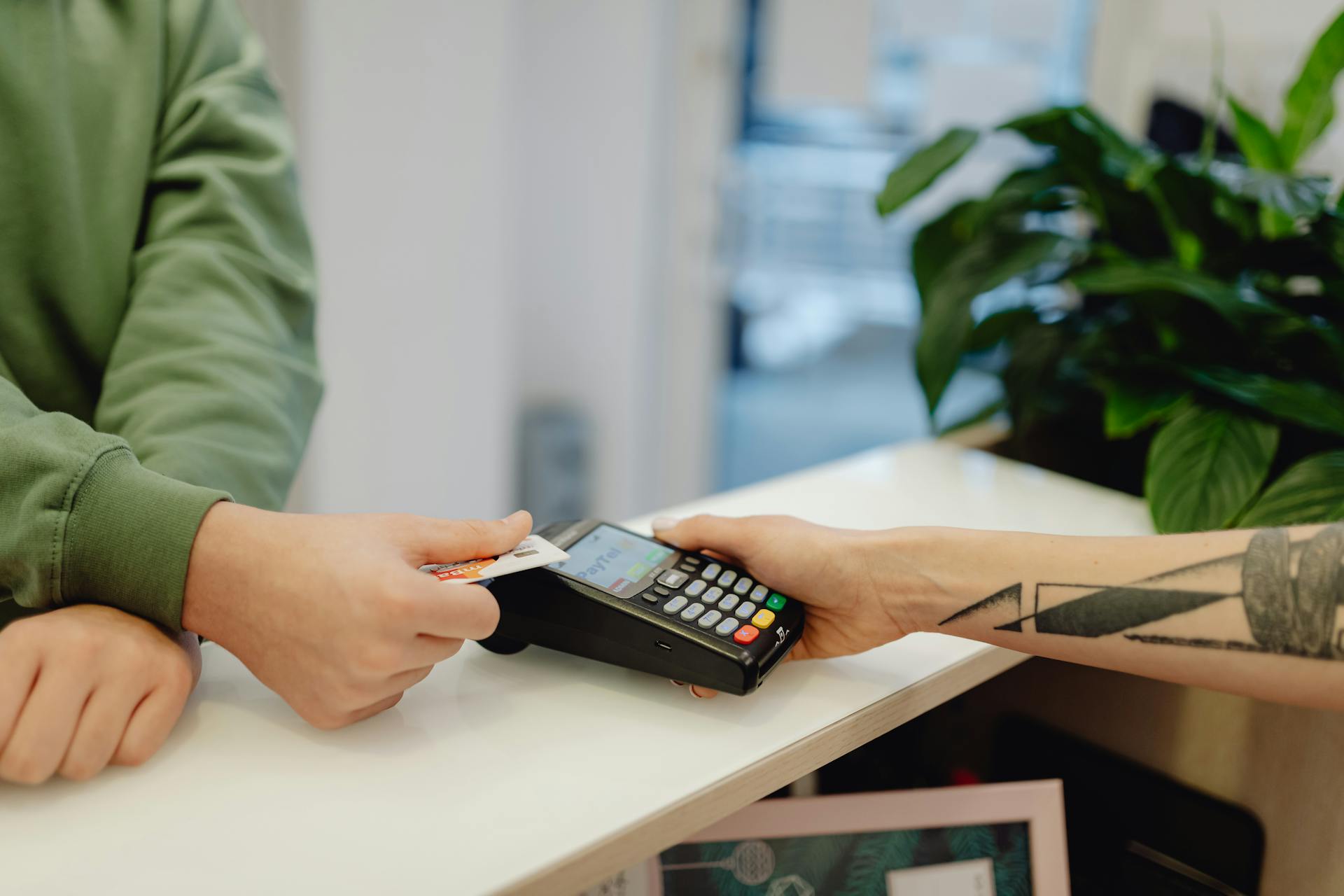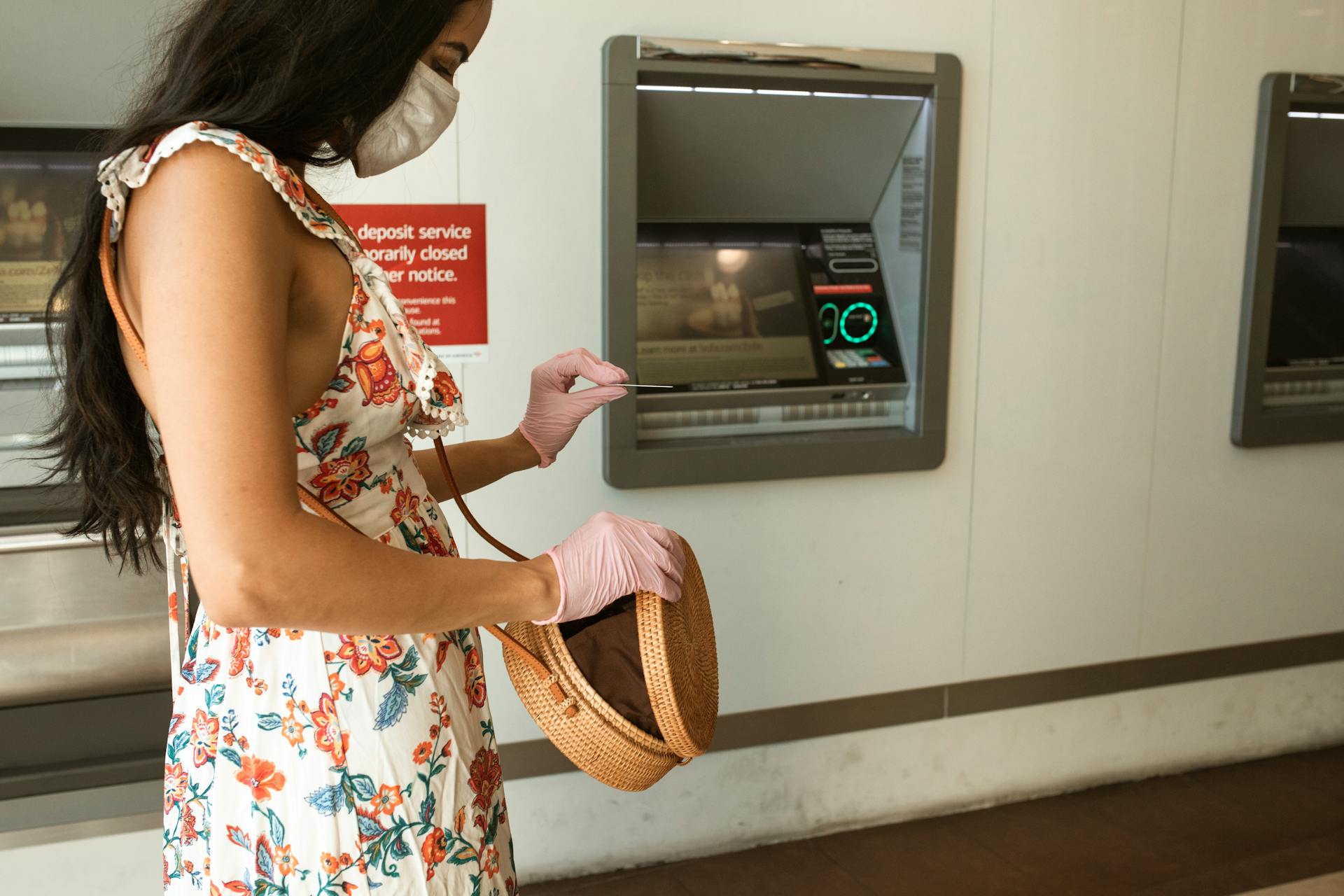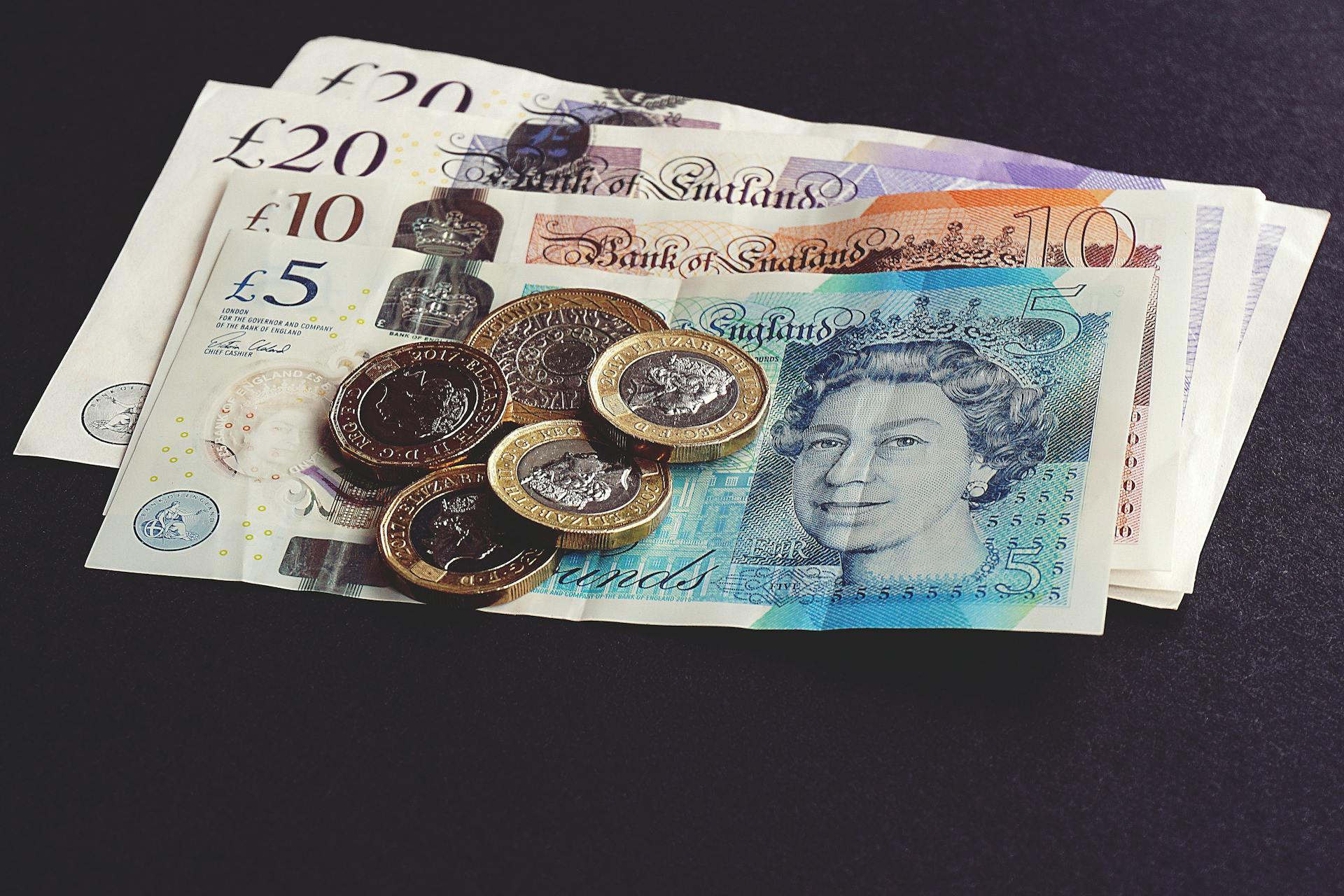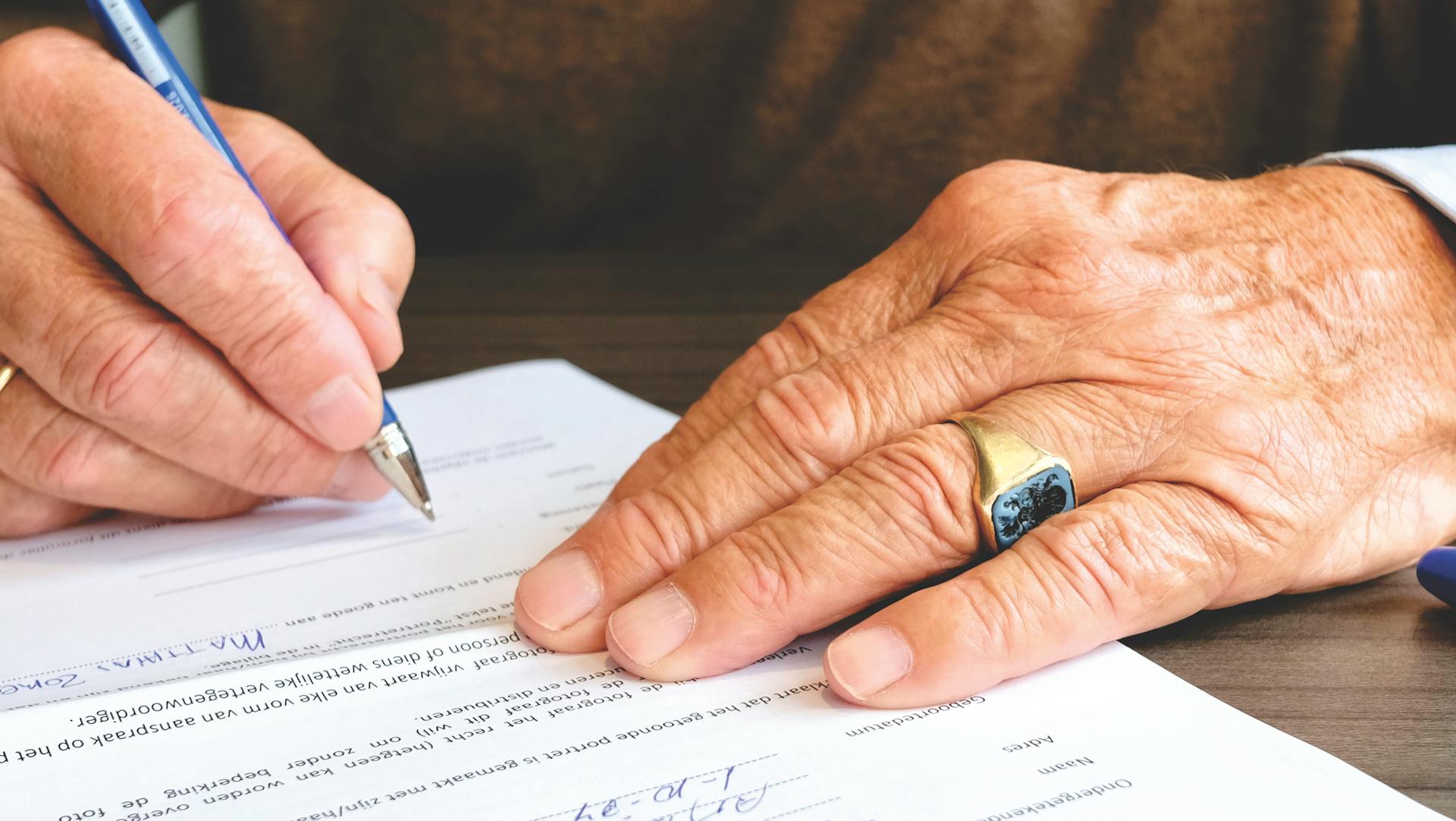
Writing an electronic check is a straightforward process that can be completed in just a few steps. The first thing you'll need is a check card or a debit card linked to your checking account.
To get started, you'll need to ensure that you have a checking account with a bank that offers electronic check capabilities. This is typically the case with most major banks, but it's always a good idea to check with your bank to confirm.
The check card or debit card you use for electronic checks is linked to your checking account, so you can use it to make purchases or pay bills online, by phone, or in person.
What Is an E-Check?
An e-check is a digital payment method that contains the same information as a paper check, including your checking account number, bank routing number, and payment amount.
It's processed through the Automated Clearing House (ACH) network, which is managed by the National Automated Clearing House Association (NACHA) in the United States.

The ACH network operates under the Federal Reserve and is a secure system that facilitates electronic payments and money transfers between banks.
Unlike a direct deposit, an e-check is a "pull" payment, meaning the payee initiates the transaction and pulls funds from your account.
In most cases, an e-check can be processed in fewer days than a traditional paper check, making it a convenient option for online payments.
Electronic checks also have more security features than standard checks, including authentication, digital signatures, and encryption, which provide an added layer of protection for your financial information.
Discover more: United E Check in
The Benefits of
Electronic checks offer a range of benefits that make them an attractive option for businesses and individuals alike.
They are cheaper to process than paper checks and credit cards, with median costs ranging from $0.26 to $0.50 per transaction, compared to $2.00 and $4.00 for paper checks.
Electronic checks also have faster processing times, cutting down the overall payment time to just two to five business days, compared to seven days or more for paper checks.

In addition to being faster and less expensive, electronic checks enable more efficient record-keeping and improve cash flow by eliminating issues associated with expired and reissued credit cards.
They are also more secure than paper checks, with instant verification of eCheck credentials reducing the risk of check fraud and returned checks.
Electronic checks are environmentally friendly, reducing the need for paper checks and minimizing paper waste and the resources required for printing and mailing.
Here are some key benefits of electronic checks:
- Cost-effective: Electronic checks are often more cost-effective than paper checks, since you don’t need to pay for paper checks or stamps.
- Convenience: Electronic checks eliminate the need for physical checks, reducing the time and effort required for writing, mailing, and processing paper checks.
- Security: Electronic checks offer enhanced security features, such as encryption and authentication, to protect sensitive financial information.
- Environmentally friendly: By reducing the need for paper checks, eChecks contribute to environmental sustainability.
- Peace of mind: Electronic checks provide extra layers of safety, including authorization, digital signature, duplicate detection, encryption, and certificate authorities.
Overall, electronic checks offer a range of benefits that make them an attractive option for businesses and individuals alike.
How Electronic Checks Work
Electronic checks are a convenient and efficient way to make payments. They're part of the electronic banking field and a subset of transactions referred to as electronic fund transfers (EFTs).
To understand how electronic checks work, let's break down the process into three basic steps: authorization, processing, and settlement. Authorization is the first step, where you fill out your eCheck through an online payment portal, click "Submit", and authorize the payee to withdraw the payment amount from your checking account.

The Check Clearing for the 21st Century Act, also known as "Check 21", was signed into law on October 28, 2003, and enabled the practice of electronic check processing by removing legal barriers. This act allowed banks to verify fund transfers electronically with digital checks, eliminating the need to transport physical checks between banks.
In the processing step, the business's payment processor receives the eCheck and sends a payment request to the Automated Clearing House (ACH) network. The ACH network confirms that the funds are available in your account.
To initiate an electronic check, your customer must provide their bank's routing and account number, and their authorization. This information is similar to what's required for a paper check.
Here's a step-by-step overview of the information needed for payment processing:
- Your name or your business's name
- The bank account from which funds will be drawn
- Applicable routing numbers
- The name of the issuing bank
Once the transaction is verified and approved by the ACH network, the funds are transferred from your account to the payee's account, which is the final step in the settlement process.
Are Secure?

Electronic checks are among the most secure payment methods available for businesses, as they can never be lost or misplace, and bad actors can't take them out of the mail or off someone's desk.
Unlike traditional paper checks, eChecks can be reversed within a certain window of time, making them less vulnerable to fraudulent activity. This reversal window is no later than five business days after settlement.
eChecks are processed through the Federal Reserve-regulated ACH network, which means they must follow strict security protocols. This ensures that your sensitive financial information is protected during transmission.
In fact, electronic checks provide more security than using a physical check, as they immediately verify credentials and reduce the risk of bank fraud or returned checks.
The additional layers of authentication through the payment process add layers of security that protect both parties. These security features include Advanced Encryption Standard, Transport Layer Security, and Multi-factor authentication.
Here are some key security features of electronic checks:
- Advanced Encryption Standard
- Transport Layer Security
- Multi-factor authentication
- Cloud infrastructure technologies
- Continuous security monitoring
These security measures ensure that paying by eCheck is generally considered safe, thanks to the use of encryption to protect your sensitive financial information during transmission.
Common Challenges and Solutions

Writing an electronic check can be a bit tricky, but understanding the common challenges can help you navigate the process smoothly. One of the challenges associated with eChecks is the risk of payment reversal, which can happen if the funds in the payee's account are insufficient.
EChecks aren't perfect, but knowing how to address the challenges can solve most problems. The challenge of payment reversal can be mitigated by ensuring the payee's account has sufficient funds before initiating the eCheck.
If you're writing an eCheck, it's essential to understand that eChecks aren't as secure as cash or credit cards, as they can be vulnerable to fraud and identity theft. However, this risk can be minimized by using secure online payment platforms.
The challenge of eCheck processing time can be frustrating, but it can be solved by choosing a payment platform that offers fast and reliable processing. Some payment platforms can process eChecks in as little as 24 hours.
Additional reading: Electronic Funds Transfer
Comparison with Paper Checks

Electronic checks offer a more cost-effective option compared to paper checks. The median cost of initiating and receiving an ACH payment is between $0.26 and $0.50, while paper checks can cost between $2.00 and $4.00.
Printing and issuing a paper check can cost your business anywhere between $4 and $20, whereas the average fee per eCheck transaction ranges from $0.30 to $1.50. This significant difference in cost makes electronic checks a more attractive option for businesses.
Electronic checks are also more secure than paper checks, with instant verification of credentials and multiple levels of authentication to ensure funds are routed properly.
Readers also liked: 50 Dollars
Benefits of Paper Checks
Paper checks have their own set of benefits. They offer a more traditional payment method that some people prefer.
One benefit of paper checks is that they can be physically submitted for deposit, allowing for a more hands-on approach to managing finances.
Paper checks can also provide a paper trail, which can be helpful for record-keeping purposes.
However, paper check fees can be quite high, often being 10X more expensive than eCheck fees.
Differences in Paper Checks

Paper checks are more prone to check fraud and returned checks due to the lack of instant verification of credentials. This can result in financial losses for businesses.
Paper checks process much slower than electronic checks.
Electronic Check Processing
Electronic check processing is a faster and more efficient way to receive payments compared to traditional paper checks, eliminating the delays of receiving checks via snail mail and having to go to the bank to deposit them.
The average eCheck processing time takes 3-5 business days, but you may receive the funds in your business account as soon as the next business day. This is because your eCheck processor or financial institution may front their own funds to your bank account and be reimbursed when the electronic check clears.
To initiate an electronic check, your customer must provide their bank's routing and account number, and their authorization, all of which would be provided on a paper check too. This information is essential for payment processing, which is similar to the traditional check payment process.
Consider reading: Difference between Personal and Business Checks
Facilitate Regulatory Compliance

Using electronic checks can help businesses demonstrate their commitment to following regulations. This is especially important in the United States, where eChecks are regulated under laws like the Electronic Fund Transfer Act and the Uniform Commercial Code.
These laws establish requirements around authorization, error resolution procedures, disclosure of fees and policies, and defining the rights and liabilities of all parties involved. By offering eChecks as a payment method, businesses can show they're taking these regulations seriously.
The structured legal framework provides safeguards against fraudulent eCheck transactions. It also outlines clear protocols for resolving disputes fairly, which can help businesses build trust with customers.
Businesses that choose the regulatory-compliant path of eChecks can mitigate risk and avoid penalties for violations. This is a key advantage over alternative digital payment methods that may operate in greyer legal areas without as much oversight.
Clearing Time
The time it takes for an eCheck to clear can vary, but it generally takes between three to five business days. This is because the ACH network processes payments in batches, not one by one.

The ACH network has to verify your bank information and perform security checks, which can take a few days. This is a more efficient way to process payments, but it does mean that there's a delay in receiving the funds.
If you send an eCheck on a Friday, the payee may not receive the funds until the middle or end of the following week, since eChecks aren’t processed on weekends and holidays.
Here's a breakdown of the clearing time for eChecks:
Keep in mind that the settlement timeline may differ from the speed with which you receive an eCheck payment.
Frequently Asked Questions
How do you pay by electronic check?
To pay by electronic check, customers fill out an online form with their bank account and routing number, authorizing the payment through the ACH network. This process is similar to writing a paper check, but is faster and more convenient.
How do you send an eCheck to someone?
To send an eCheck, sign up for an eCheck service through your bank or a payment processor and follow the authorization process. This will enable you to send and receive payments quickly and easily through online banking networks.
Which routing number do I use for an eCheck?
For electronic eChecks, use an ACH routing number for faster processing. This type of routing number facilitates same-day or next-day clearing, unlike paper checks.
What documents do I need for an eCheck?
To set up an eCheck, you'll need to provide your Bank Account Information, Voided Check, and Tax Identification Number or Social Security Number. Review our full list of required documents to ensure a smooth eCheck setup process.
Sources
- https://www.versapay.com/resources/what-are-echecks-benefits-accepting-echecks-b2b-businesses
- https://www.paypal.com/us/brc/article/what-is-an-echeck
- https://www.investopedia.com/terms/e/electroniccheck.asp
- https://www.sofi.com/learn/content/what-is-an-electronic-check-e-check/
- https://paymentcloudinc.com/blog/electronic-check-payment-processing/
Featured Images: pexels.com


